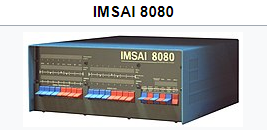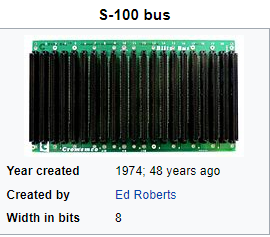Yup, learned BASIC on one those machines. My “Introduction to computers” class freshmen year of High School was in Computer Lab 1 which had a minicomputer in the back and the students used these terminals. The next summer the classroom was switched to new IBM x286 machines and I had was for teaching WordPerfect and Lotus123.
We had three of those daisy wheel type at my high school Freshmen year. Those printers where so freaking loud it sounded like machineguns going off.
Went to college in '77, I remember disco line dancing in the dorm hallways.
We did ticker tape and punch cards, and learned Assembly language. My college you could only minor in “Data Processing” so I majored in math. We had to code our punch cards, turn them in, and line someone said above, there was a batch run several hours later, and then you got you printout. With a message that said fatal logic error on line 20. And rinse and repeat. It took sometimes days just to get one program to work. Good times.
I also learned Basic, Fortran, and Cobol as technology progressed. I gave it all up to become an accountant.
Anybody else remember building a computer using a Heath Kit?
We had a TV. I was the remote.
I adjusted the rabbit ears
The teletype connected via a 110 baud acoustic modem to one of two different systems. We either connected to a Data General Nova 800 Jumbo at Saddleback College, or a SDS Sigma 7 at UCI. It actually didnt matter which one we connected to because they both had the ability to run the BASIC programming language which was the language I was learning at the time.
I didn’t do the Heath Kit version… but I did build my own Imsai 8080 computer… this required soldering over 2000 solder connections on the S100 Bus backplane. That first computer had a whole 8k of memory, and initially I installed a single 70k 5 1/4 floppy drive.


My “programming” claim to fame.
I was a hero of the math club (some call it “mathletes”) for making a program for the TI-83 calculators that could convert base 10 to base 23 or whatever. You could transfer the programs from one calc to another but we didn’t have this internet thing back then (1997-ish).
Also, my old-man story is “Back in my day, all worksheets in school were in purple ink.” The schools used mimeographs – copy machines were a luxury then.
My high school claim to fame was entering 5318008 on a calculator.
(might have been middle school)
oh the smell and feel of dittos… Actually, I think you might be referring to those Ditto machines that “printed” in purple. Mimeographs were slightly different in that they took real ink to print, and you could print in any color… but Ditto machines printed with more of a chemical process. see: Ditto Machine / Spirit Duplicator
Getting a fresh one would still be damp.
Huh no kidding. Well I certainly can’t argue. I guess the teachers didn’t know the right name.
Reminds me of my trusty old HP-16C. Wasn’t RPN that fun?
Ohhhh yeah… while in the navy, one of my jobs was processing the “Plan of the Day” on these machines.
The old ammonia printers for making blueprints were fun too.
Once I was even sent out by mgmt to appraise this new thing called a “Fax” machine.
Seems like experience isn’t what it used to be… every 5 years (or less) I need to forget almost everything I know and start over.
The cards were 80 columns wide but you could only use 72 of them, the last 8 were for sequencing the cards, adding sequence numbers in case you fell on your way to the computer center and the cards spilled all over the place. Each computer center had a card sorter that would put them back in order based on the sequence numbers. As I recall, Fortran used only columns 5 - 72. By the time I got into COBOL it was mostly on line.
My first computing experience was on what can best be described as a programmable calculator, although it was actually a bona fide computer produced by Burroughs. The machine did not have a compiler or operating system, you programmed at the bare metal, in machine language and kept a pad of paper next to you to write down the locations where you stored your input and output variables. When I got to Assembler I thought it was a high-level language.
I remember taking a class in BASIC and when the instructor was talking about A = B + C, I was having a problem understanding how B and C could have values without a load register command. Years later I was working in product development for a hardware vendor, now out of business, and programming in Assembler to create a database manager.
I took a typing class in high school, so when I used punch cards in college I was able to type them up pretty quickly. In fact, I could make a little extra beer money typing cards for those two-finger typists.
First professional job out of college was writing in COBOL.
My first job out of college was programming on a TRS-80 with 3 extra bays for 8" floppy disks. Several years later, I was programming cash register systems using the IBM 486 PCs (was trained at IBM for that). I also installed a Novell network when it was Novell 1.0.
In college, I used punch cards for programming RPG II, BASIC and FORTRAN. Then I got to use one of those “online” computer terminals for COBOL…LOL!! Green screens hard-wired to a main frame that NO ONE could get near!
Oh the good old days ![]()
Yup, I used one of those in high school too. The actual computer was at the voke-tech school in the next town, so we could always know when it was up by the lag time between typing the key on the keyboard and the character being typed.
And @hmwillett, someday you’ll have outlived your warranty too!
I’m getting close. ![]() I think I got a used model.
I think I got a used model.
Ouch. That’s when you used the comments columns to number each card. Ask your dad if he ever drew designs across the tops of his card deck so he could see his deck in the stack of programs waiting to be read. Hard to imagine, but if you ever did it, hard to forget.